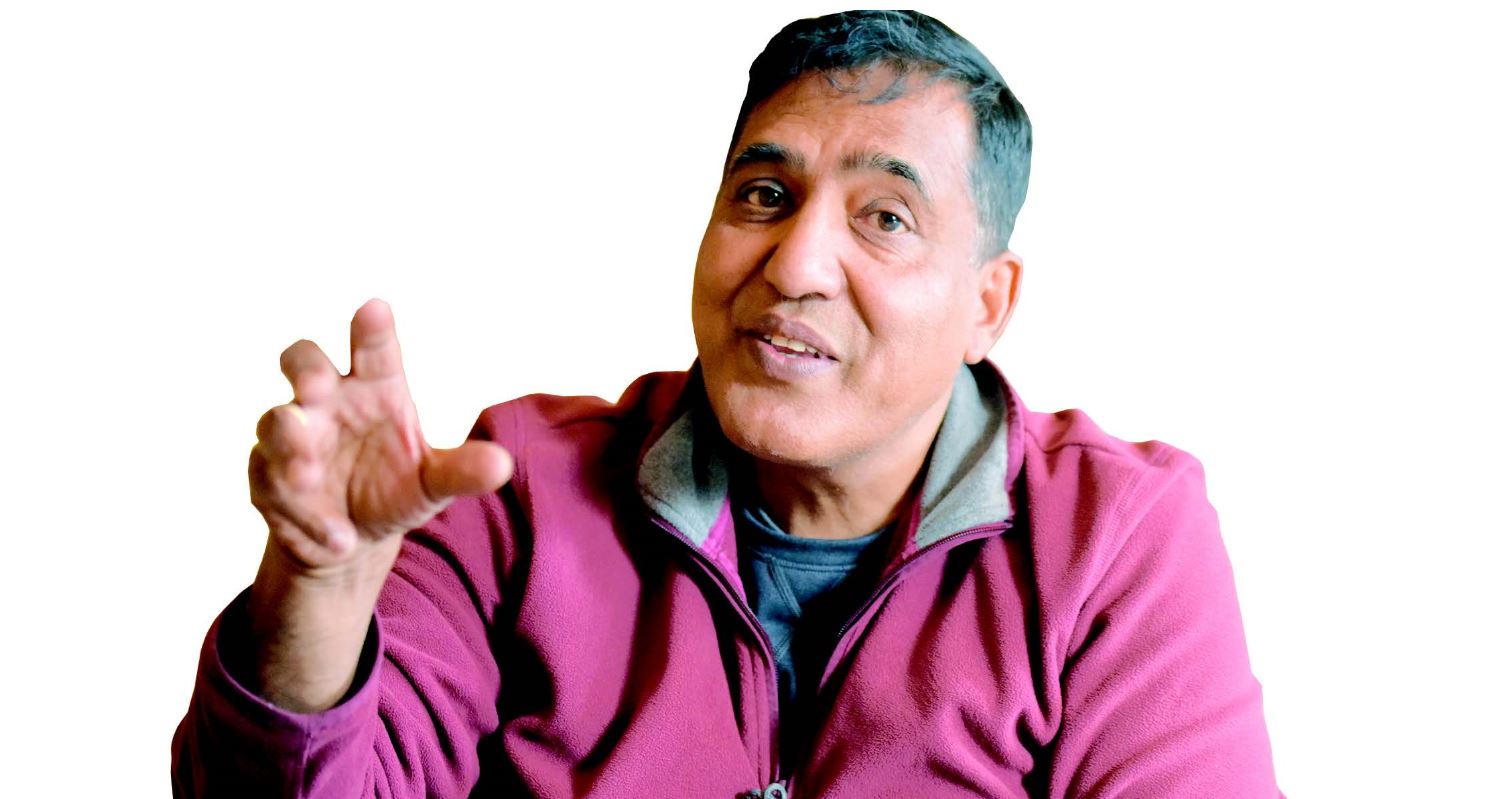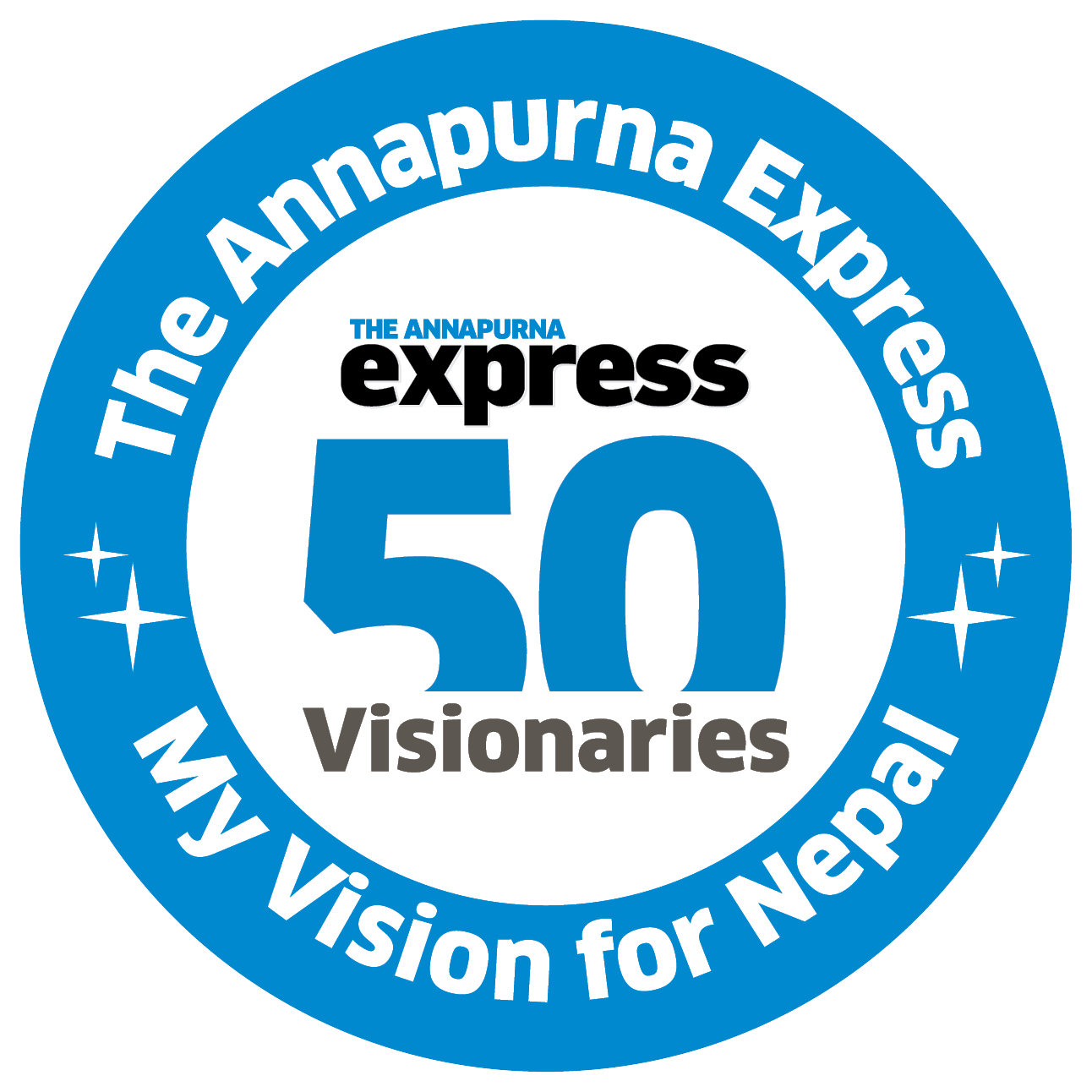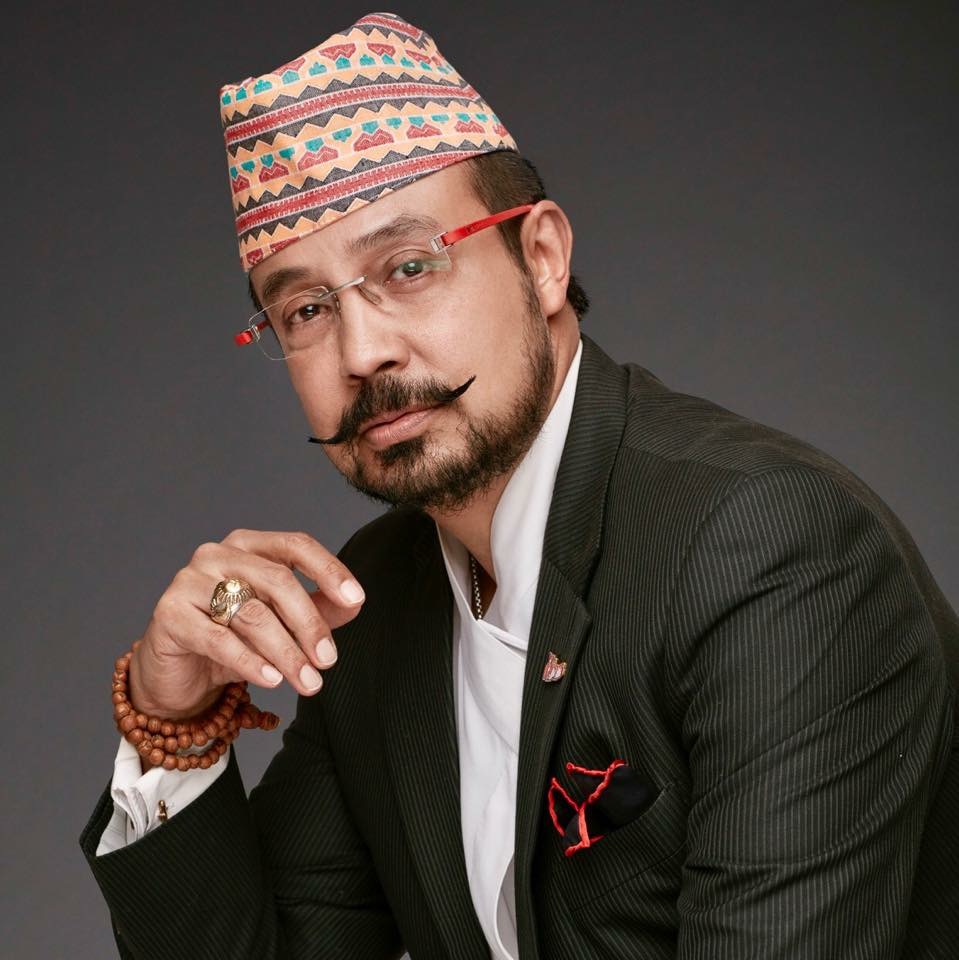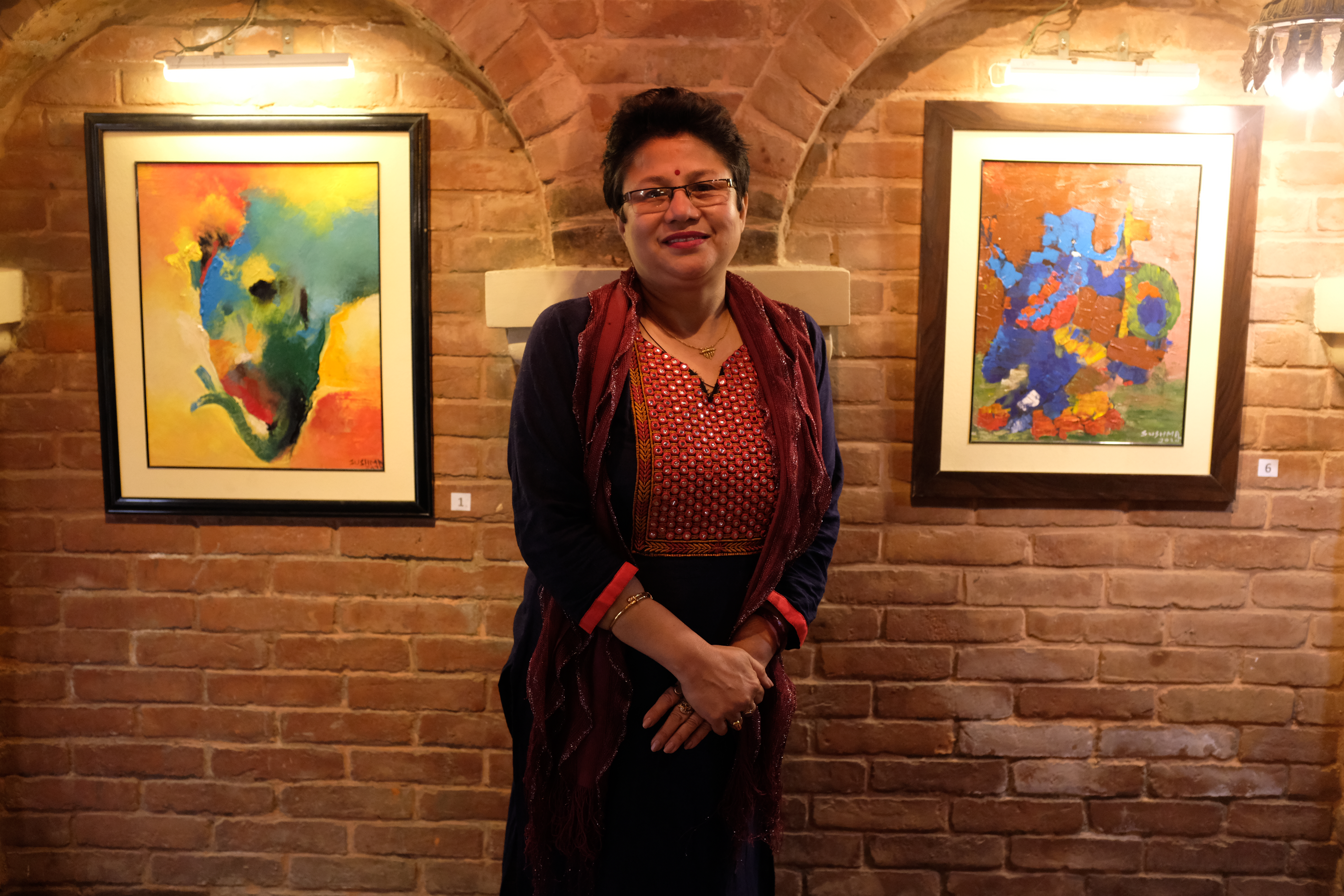My Vision for Nepal | Use our core strength and competence to build a better Nepal
Use our core strength and competence to build a better Nepal
Three ways to realize the vision:
1) Prioritize tourism as the center of our development activities.
2) Focus on basic infrastructures: hydropower, transport, and communication.
3) Create a youth-friendly environment to stop the brain-brawn drain.
Often, I hear our leaders say they will transform Nepal into Singapore, Japan, or Australia.
Countries, like individual humans, have their own set of strengths and competencies. If we utilize what we have, we, as a people and a country, can be the best version of ourselves. If we try to copy others, ignoring our strength, we can never achieve our true goals. So we need to identify our strengths and use them properly.
Nepal should be seen as a unique country. No one can take away our natural resources, political ideology and human resources. We can learn from other countries and their systems, but we need to do things on our own.
Our biggest resource is our cultural and natural beauty. Therefore, tourism should be the focal point of all development activities in the country. I place tourism at the top because we already have resources for it.
Many people have Nepal on their list of top tourist destinations. We thus don’t have to promote or market Nepal. Also, we can benefit from our two big neighbors with booming economies. We don’t have to seek tourists from far out.
We have uncountable, irreplaceable, and unmatched ancient temples, monuments, religious sites and natural resources. The great thing about tourism is that no other industry creates as many jobs. It gives jobs to hoteliers, guides, businesspersons, small- and large-scale farmers, and many more. So millions of people could benefit from a flourishing tourism industry.
Infrastructure-development is important for us, including hydropower, roadways, railways, and electric transmission lines in order to link us with two of the world’s largest economic powerhouses. We need to see how we can develop our infrastructure so that we become a power exporting country, and a connecting hub between India and China.
Nepal is a young country, and youths make us optimistic about the future. If we cannot manage them within Nepal, we would bear an enormous loss. For long, other countries, rather than Nepal, have been benefiting from our demographic dividend. We need to create opportunities for them here and lure them back.
During times of crisis such as the 2015 earthquake, and even during this pandemic, many youths have volunteered. They have done a phenomenal job in digitalization and entrepreneurship. And they really love their country. They are creative too. My friends had no option to working in banks but nowadays the youths dare to launch their own startups.
My mother was in the foreign service and my father at the World Health Organization. I never got to grow up in Nepal and what you can’t have is precisely what you want. So I always wanted to come to Nepal and settle here. For me, it was the most beautiful country.
As soon as I graduated and started working in Nepal, I spotted a vacuum here, that of leadership. This is the case not only in our political system, but also in our bureaucracy, private companies, social sector and even our cultural arena. Private organizations still think cheap labor is their unique selling proposition. But it isn’t. A productive labor force is the real USP. We need to create an environment in which every Nepali can get a decent job, and for that we need strong leadership.
Wherever there is a fault in the system, it is not because Nepalis are not hardworking or we do not have willpower. Nepalis work in almost every sector all across the globe because they are capable, hardworking, passionate, honest, and truthful. So, why can’t the same Nepalis work at home? It’s because of the shortage of leadership. We need smart leaders in every sector.
If we do not get the right leadership, the future is dark. If whatever happened in the past 50 years continues for another 50, even worse things will happen. But we are making progress and if in the next five years we find good leaders, we will bloom. Many things need to be done better. But as it is, we also have better roads, health facilities and schools than we did at any time in the past, and that makes me hopeful.
I hear people say that being landlocked between India and China is the biggest curse for Nepal but I think it is something good. As I mentioned earlier, we can see them as our markets rather than as obstacles. People in the Maldives might say they are surrounded by water, they don’t have land access, and even the water is salty. But what we see is that they have turned this potential weakness into a great strength. So, these things are a reflection of our mindset.
Nepal doesn’t need subsidies or any kind of grant for its tourism market. If there is something we cannot do in Nepali tourism without foreign help, we shouldn’t do that because we already have enough things to do—focus on those. We don’t need subsidies to harness the potential of our hills and Himalayas, Annapurna Base Camp and Everest Base Camp, Pashupati and Lumbini, Bardiya and Chitwan—we can do it on our own.
Nepal has been in a transition phase throughout my life. We have had political transformations, cultural transformations and social transformations, but none of them had a clear objective. What Nepalis want is an economic transformation so that our youths don’t have to line up at the international terminal of the TIA. If you ask them, they will say they are leaving because of their poor economic status, as they cannot find gainful employment here. So, if the problem is with our economy, why are we focusing on political, cultural, and social transformations?
Again, as economic transformation is the solution to almost all of Nepal’s problems, let’s focus on that.
Quick Questions:
Who is one Nepali businessperson worth emulating?
Binod Chaudhary.
What would you be today if you were not a banker?
A photographer. I have a huge passion for photography.
An axiom or quote you live by?
The objective of life is to be happy, and that happiness has five ingredients: family and friends, money and economic wealth, health and wellbeing, power and status, and greater good and god. How much of each ingredient is required differs from person to person. Find your unique happiness formula and live your life in a manner that always moves you towards your happiness summit.
My Vision for Nepal | Socially just cities rich in native architecture
Socially just cities rich in native architecture
Three ways to realize the vision:
1) Realize the value of our diverse region-specific architecture. Start by setting examples with our public buildings.
2) Provide incentives for people to conserve local architecture and have policies and guidelines for construction and design in culturally/naturally/architecturally significant areas.
3) Enhance public infrastructures for social equity, starting with public transport, open public spaces and green parks.
Nepal is a country of unique cultures and traditions. But our development remains unplanned. I think our infrastructure models should rely on traditional and long-lasting structures. Nepal has been forgetting its strength because of unplanned urbanization and haphazard construction. Kathmandu, a city of temples, has turned into a concrete forest.
While planning cities or buildings, we should not forget we are building them in Nepal and that they should carry Nepali essence and identity. In the race to copy styles from abroad, we forgot Nepali models and architects. This has been happening for long—Chandra Shumsher did not use our designs for Singhadurbar and other palaces even as he copiously copied from Europe.
These days, even villages are pursuing unplanned urbanization. So, governmental offices should be built in artistic ways—initially to set the example for the public. For instance, stone-roofed houses are the major attraction of the Gurung community and they should be preserved.
Mustang not only attracts me with its natural landscape. I am compelled to go there to enjoy the atheistic feel of its houses. Those houses, with their own history and identity, have been tried and tested for habitat and climate. They have become a part of the natural landscape.
Nepal has many palace squares and other traditional areas but their surroundings are not well maintained. If I take a picture of Patan Durbar Square, tall concrete buildings come in the background, destroying the entire landscape. This is the problem of every cultural place in Nepal. If this continues, we could soon have no tourists.
Our country has centuries-old settlements like Bungmati and Sunakothi. If we cannot intervene to preserve such places, forget tourists, we won’t be able to show our identity to upcoming generations. These are identity-oriented developments and we should be proud of them.
Of course, everyone wants to live comfortably. For instance, Newa culture houses have small windows and they don’t allow adequate light. But, if we can both preserve our heritage as well as live comfortably, why shouldn’t we? In Rome, many houses have a front-facing dummy with cultural designs and inside—everything looks modern. We can do the same in Nepal. Imagine Kathmandu with similar artistic Newa houses.
If we compare the pictures of Amsterdam and Dillibazar from the 1960s, there are not many differences. But today, Dillibazar is nowhere close to Amsterdam.
These things need a tremendous level of economic and financial support. So both government and communities should plan and collaborate to revive our culture. We have local governments and they have enough budget and power. They should be concerned about these things.
One exemplary initiative has been undertaken by the local level officials of Upper Mustang. They put all the electric wires that were undermining the essence of the historic place underground. It would have taken only a few months to connect wires through electric poles, but they didn’t care about time and took them all underground in three years. This single undertaking helped preserve the old identity and the atheistic appeal of Upper Mustang. So, we should prioritize quality of development instead of its quantity.

Kirtipur Municipality mandates that every house there be built in Newa style. It is a progressive initiative but people there are not happy. A few months ago, I was there for a survey. They told me that wooden carved windows and doors are major parts of Newa houses, but they cost a lot more compared to normal ones and they thus couldn’t afford them. So the municipality should help those residents financially or in some other way.
We have been oriented to think that having tall buildings and adding lanes on roads are the only indicators of development. We lack public transport. If the government provides well-managed public transport, no one will buy individual cars—significantly reducing traffic jams. Nepal also doesn’t have infrastructures for pedestrians or cyclists.
A well-planned concept of urban development never discriminates between the rich and the poor. It also assures safety for everyone, thus ensuring social justice and equity. Planning should prioritize pedestrians by constructing facilitated footpaths, with benches, trees, and lights. Not only Kathmandu, other cities should also develop in this way. When public infrastructures are at par with private infrastructure, we can feel real development.
To take another example, the trekking route to Tilicho Lake has been widened, creating problems for trekkers. Yes, we need roads but pedestrians should get priority. Trekking is also a culture that needs preservation. So, region-specific development is necessary. That trekking route, for instance, might be better off with ropeways instead of roadways. Each place has its unique identity.
We can’t compete with the globalization of Dubai, nor with the architecture of Paris. So we need to assess our current situation: how do we showcase our identity?
Nepali urban areas lack parks, greenery, and open spaces. There are no places for kids and elders to play, walk and communicate. This has ruined relationships in neighborhoods. Children don’t have anyone to interact with, nor do the elderly. The best memory we have from our childhood is of outdoor games but kids are unable to enjoy that now.
The structure of urban society forced our grandparents to stay indoors, badly impacting their psychology. Only by finding solutions to these problems will Nepal really develop. The earthquake and the Covid-19 pandemic also taught us the importance of open spaces.
The things I talked about can’t happen with the effort of an individual, so let’s hope our government and administration also buy into it.

Quick Questions:
Who is your role model in Nepal?
There are many but Kulman Ghising and Maha Jodi always come first.
Any book that inspired you?
I enjoy reading books based on the themes of Bhagwat Gita. This timeless book inspires me and provides positive vibes in a chaotic world.
Why did you choose to study architecture?
Since childhood, I have had an interest in buildings and designs. Moreover, an American sitcom “How I Met Your Mother” has an architect character, Ted Mosby. This is where I learned the word “architecture”. The series and the character fascinated me—creating real things from abstract designs and pencil sketches is powerful work.
My Vision for Nepal | Full realization of inclusive, diverse, federal, and secular Nepal
Full realization of inclusive, diverse, federal, and secular Nepal
Three ways to realize the vision:
1) By restoring political accountability.
2) By having the courage to admit our mistake and learn from it.
3) By reflecting on our spiritual values, and the meaning and purpose of the institutions we serve.
I have had the opportunity to work with the government and political parties and participate in various political movements. All this while, I have always been struck by the diversity and plurality of Nepal, its ideas, heritage, and institutions. The constitution we have today also talks about inclusion, diversity, plurality and their place in the global setting. I thus want to see my country really embody the principles of pluralism, diversity, tolerance, and mutual respect.
Unfortunately, because of our geopolitical location and fragile political institutions, I find the realization of the ideal of a plural and tolerant society a little illusive. But I am optimistic that we will see such changes in our lifetime. So, again, I imagine a plural, diverse and tolerant Nepal.
The embodiment of these values is easier said than done in today’s partisan political climate. Yes, the political parties are organized around the concept of power and they need to compete with each other. But I wonder if anyone in the political leadership in Nepal questions themselves why they are in politics. I speak of politics in terms of its larger goal for the society and in fact for the whole of humanity.
Our everyday politics seems unconcerned with the larger public good. It has become a narrow, self-interest guided machine. We have a political system that gives us a big umbrella under which different ideas and possibilities are mediated through peaceful democratic means. But there has always been this debate in political science about what matters more: voice or number?
In the everyday democratic process, we have been informed that numbers matter, which is a utilitarian, and interest-maximizing side of politics. But so long as there is a single poor or hungry citizen, or a victim who has been denied justice, number is not an issue. We should devise certain structures or prepare such a political climate so that those at the margins whose voices are not represented are counted as well.
In a theoretical sense, our country was never colonized. But we have been unable to escape the political economy of geopolitics, imperialism, and colonialism. We were a larger part of the global and regional frameworks even as an independent nation state. Over time, we have lost our ability to project ourselves as the normative torchbearer of political values and principles. The solution is to practice active diplomacy and speak up on normative issues like climate, justice, discrimination and poverty. I want to see a more dynamic and participatory country in the global processes. We safeguard not only our interest but also our autonomy through active diplomacy and presence in the global arena.
The other thing is that our education system is in disarray. We have a state-private sector hybrid model. But I believe basic quality education should be the state’s sole responsibility. This is where my state has failed. In this pandemic, we also realize that public health is important. Our public health system is dysfunctional. I would like to see every Nepali covered by a universal healthcare insurance system.
Most importantly, the current pandemic and bad governance is defeating the very idea of a state in Nepal. Why do we need a state? For collective security and safety. But during this pandemic I see various policy failures due to bad governance. The state’s role can’t be ignored in a country like ours. The state is obliged not just to collect taxes but also to care for us. I thus imagine a bare-minimum democratic, welfare state.
Again, we see a collective failure of the Nepali state and society in these hard times. I haven’t seen any political or social leader publicly admit their mistake. Where is the accountability? The first step is to restore political accountability. By this I mean public accountability: do what you publicly commit to doing. This applies to both individuals and institutions. If you don’t do that, you have to bear the responsibility. One of the big challenges for Nepal is to ensure such public accountability.
In a democracy, the very idea of equality and equal opportunity and participation means anybody can become a leader. But the institutional arrangement of accountability is more important. People should constantly be questioning. Sometimes we expect too much of our leaders, but we forget our own responsibility. We need to be vigilant, as vigilance is the price of democracy. In our case, we see overall institutional decay. We need to find collective resolve to move ahead.
Where will this collective resolve come from? It comes from failures too. You have to have the courage to admit your mistake and to learn form it. Instead we in Nepal are headed towards a large failure of public service-delivery. If we are to improve, we need to change the way we do politics.
What has been missing in present-day politics and social discourse is deliberation on the meaning of collective life. It is hard to overstate the importance of institutions, of collective life. We have been too individual-focused. We never discuss why we are participating in individual and collective affairs. Why does one need to be a PM five times, or head a university repeatedly? We need institutions that evolve with time. We need to reflect on our spiritual values, the meaning and purpose of the institutions we serve, the meaning and purpose of being a political actor or any other work you maybe involved in.

Quick Questions
Which Nepali leader has come the closest to embodying your vision?
BP Koirala.
Biggest lesson from your time in government.
To fight for democracy is one thing, building a democracy is a completely different art.
A book on Nepal that has influenced you the most.
I will name two: Strategy for Survival, by Leo E. Rose; and Democratic Innovations in Nepal, by Bhuwan Lal Joshi and Leo E Rose.
My Vision for Nepal | To establish Nepal’s first global art village
To establish Nepal’s first global art village
Three ways to realize the vision:
1) Persuade the government to build the needed infrastructure.
2) Ask other countries to come establish their own divisions, as we have done in Lumbini.
3) Promote the culture of large sculptures that will draw global attention to Nepal.
My vision for Nepal stems from my early love for arts, fine arts especially.
Our house used to be filled with the paintings my grandfather and my father collected and tried to copy them. That’s how I initially learned to doodle. Soon, I was going to art classes. Growing up, I never faced financial hardships. But I had other challenges.
None of my relatives or friends was in this field and thus I struggled for inputs. But I was lucky to have great teachers. I am where I am today because of them.
I am a competitive person. I have till date won every national-level award related to fine arts in Nepal—except for the national award granted by the Nepal Academy of Fine Arts. I am determined to get my hands on that one too.
About my field, after 1950, Nepali artist started copying European artists and forgot their own culture, which was a disgrace. I think this owed to their schooling as many of them went abroad for art studies and came home with foreign ideas and styles. But what I see is more and more new Nepali artists determined to preserve Nepali customs and traditions in their paintings, which is something wonderful. One way I want to boost this tradition is by establishing a global arts village, which is also my vision for Nepal.
The global art village will provide a platform for cultural exchanges in all creative disciplines. It will be a community that blends art, culture, and consciousness and offer artists in-residence programs, classes, and special events and workshops.
The goal is to promote art and culture and in addition, provide special live-in facilities to local and global artists, musicians, poets, performers, and entrepreneurs and also to help them sustain themselves. Their creative inventions and research in turn would help the whole world.
The village, as I envision it, will have gardens and lawns for various recreational events. Moreover, it will have study rooms to be used by resident artists and students attending classes and workshops. Other attractions will be a studio, dance studio, music studio, accommodations, performance hall, exhibition space, seminar hall, playground, and a museum.
The village will help preserve arts and culture while also promoting tourism. I’ve always considered myself a patriot. The village will be my contribution to the country as it will create vital jobs and create other opportunities for national development.
I wish it to be a one-of-its kind town in Nepal, a town built with the help of modern technology somewhere in rural Nepal, but under the supervision of traditional and cultural experts. The global village will consist of every facility a town has, such as schools and universities, hospitals, housings, art galleries, movie halls, malls, carnivals, museums, art residence, and theme parks. The common motif of all will be the blended representational arts.
The place will be blessed by nature and when we add other manmade creations to it, it will come to be globally recognized. Wouldn’t it be wonderful for Nepal to be recognized as a vibrant place for arts and artists of all kinds?
Quick Questions:
Who is your favorite Nepali painter?
Sashi Shah, my teacher and mentor. He is an atheistic artist whose paintings almost come to life.
Since when have you been painting?
Since I was 13. At 18, I was competing at national-level tournaments.
One piece of advice you’d give to new artists.
Keep working hard and one day you will make it big. Do not run after money. If you are qualified, it will come naturally. I see new artists wanting to make money immediately. I am afraid they are jeopardizing their future.























